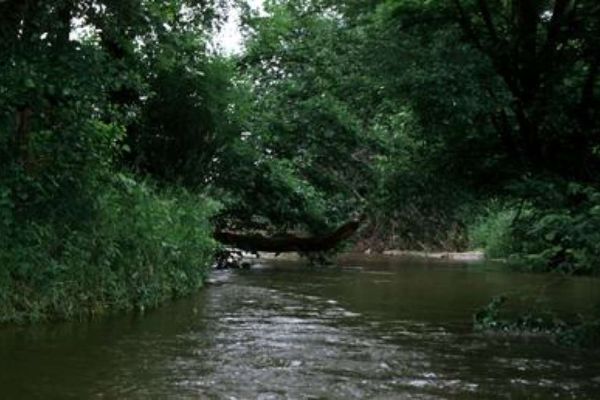Forests and water – two strong partners

Forests have unique impacts on the water balance
The impacts of forests on the local micro-climate, i.e. air humidity, temperature, and their effectiveness in filtering pollutants, are crucial.
The forest acts like an umbrella, a filter and a water reservoir. It intercepts the rain, resulting in some of it being evaporated back into the air. The proportion of precipitation which is retained in the needle and leaf mass and directly released into the atmosphere by way of evaporation accounts for up to 50% for conifers, and for up to 30% for deciduous trees.
Comparatively, forests use a very large amount of water due to the process of transpiration. On a warm summer day, 20,000 to 60,000 litres of water, per hectare, will be evaporated after transpiration by an average tree population. This therefore has a balancing effect on the micro-climate, as the forest keeps the surrounding land fresh and moist, while humidity is 10% higher in the forest itself than in the surrounding area. Water not evaporated by the forest will slowly fall to the ground.
Forest soil - water reservoir
The forest soil is porous and thus able to absorb water in a spongelike manner. Due to their high water-storage capacity, which can be up to 6 times higher than in open areas (e.g. fields), forests have virtually no surface run-off, unlike in open areas, like alpine pastures or ski slopes, where surface run-off can be a genuine problem. Rain and meltwater are retained and discharged at a very slow rate, if at all. Furthermore, in forests, snow melts comparatively slowly, and therefore neither heavy rainfall nor snow-melting leads to erosion, unlike in unforested areas.
However, despite its high water-retention potential, forest soil is unable to cope with short-duration and high-intensity precipitation events, which can result in disastrous consequences. Under these precipitation events, surface run-off will occur in forested areas and may result in soil erosion, which in turn can lead to the emergence of natural hazards such as landslides or mudflows, although usually the resultant damage is far less significant than in areas without forest cover.
Springs, water bodies, and floodplain forests
Forests aid in regulating water flows from springs into streams. Moreover, the water stemming from forest area is of excellent quality, due to the process of natural filtration.
So forests provide us with sustainable source of pure drinking water, in both wet and dry seasons
The forests located alongside streams and rivers, also know as floodplain forests, are very closely linked to the water level and quality in the river itself. Further, these forests are constantly oscillating between being completely flooded or completely dry, and offer important habitats for rare animal and plant species.
Functioning as natural flood and water retention areas, floodplain forests slow down water run-off in flood events and therefore play a major role in ‘flood control’, or mitigating the consequences of a flood event.
In the event of a flood, forests also have a ‘cleansing effect’, as they trap or filter organic matter and mineral substances. Water seeps through the thick layers of the soil and replenishes the groundwater reserves.
Plant roots help strengthen the soil surface, which helps in reducing the impact of wind and water erosion on the loss of topsoil. At particular locations, favourable to the growth of plants, the shoots and leaves of various plant species filter sediment particles from the water. In this way, a fertile topsoil gradually develops on the gravel banks, which therefore allows nutrient-demanding plants to grow.
How important are domestic forests for Austria’s drinking water?
Sustainable forest management safeguards our water supply for both present and future generations, while at the same time continuing to ensure that it is of the highest quality. In fact, many people around the world envy us for our water! Hence, the importance of forest areas cannot be emphasised enough, with forests being crucial for the local climate, the filtering of pollutants from air and water cycles, as well as for the sustainable and continuous delivery of water in abundance.
In Austria, almost 50% of the areas that directly or indirectly protect springs and other water sources are located in forest areas!
‘Forest and Water’ Initiative
The planned ‘Forest and Water’ Initiative aims to raise awareness about the important role forests play in preserving and maintaining Austria’s water supply. The implementation of the future agricultural policy has at its heart the performance of a sustainable forest ecosystem.